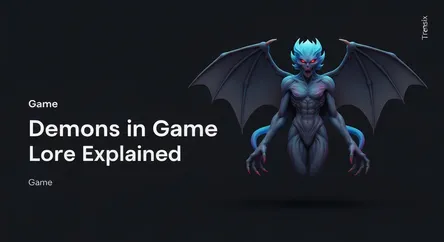Game
Demons in Game Lore Explained

Explore the role of demons in video game lore. Learn why these powerful antagonists are a staple in creating epic conflicts and challenging gameplay.
What is it?
In game lore, demons are typically malevolent, supernatural beings originating from hellish dimensions or otherworldly planes. They serve as powerful antagonists, ranging from common foot soldiers to epic, screen-filling bosses. Unlike simple monsters, demons often possess intelligence, complex motivations, and a desire to corrupt or destroy the mortal world. Franchises like Diablo present them as the primary force of evil, while series like DOOM cast them as an invasive, destructive horde. In games like The Witcher or Shin Megami Tensei, their morality can be more ambiguous, sometimes acting as summonable allies or morally gray characters.
Why is it trending?
The concept of demons is timeless, providing a classic and universally understood 'good vs. evil' narrative. Their otherworldly nature allows for incredible artistic freedom, leading to some of gaming's most iconic and terrifying enemy designs. Major releases like Diablo IV and Baldur's Gate 3 have prominently featured demonic forces, keeping them in the cultural spotlight. They offer a perfect vehicle for high-stakes conflict and provide a satisfyingly formidable challenge for players to overcome, making them an enduring and popular choice for developers.
How does it affect people?
Demons in games create a sense of genuine peril and high-stakes tension for players. Battling the forces of Hell offers a clear and compelling objective, often leading to a powerful feeling of accomplishment upon victory. They can drive narratives centered on themes of temptation, corruption, and ultimate redemption, engaging players on an emotional level. Facing down a powerful demon lord tests a player's skill and strategy, creating memorable gameplay moments and a sense of empowerment. They represent the ultimate challenge, pushing players to become heroes in a dark, fantastic world.